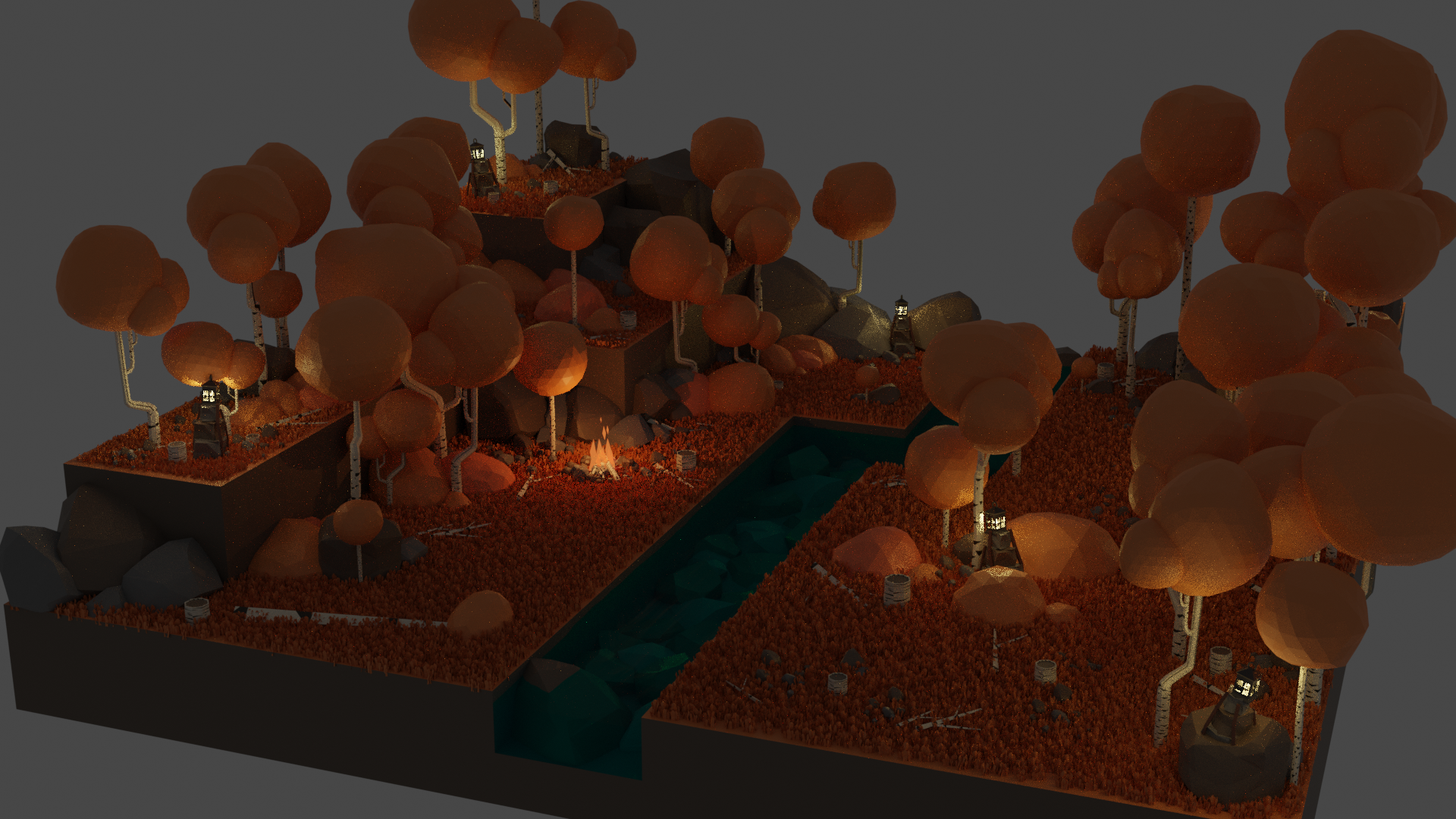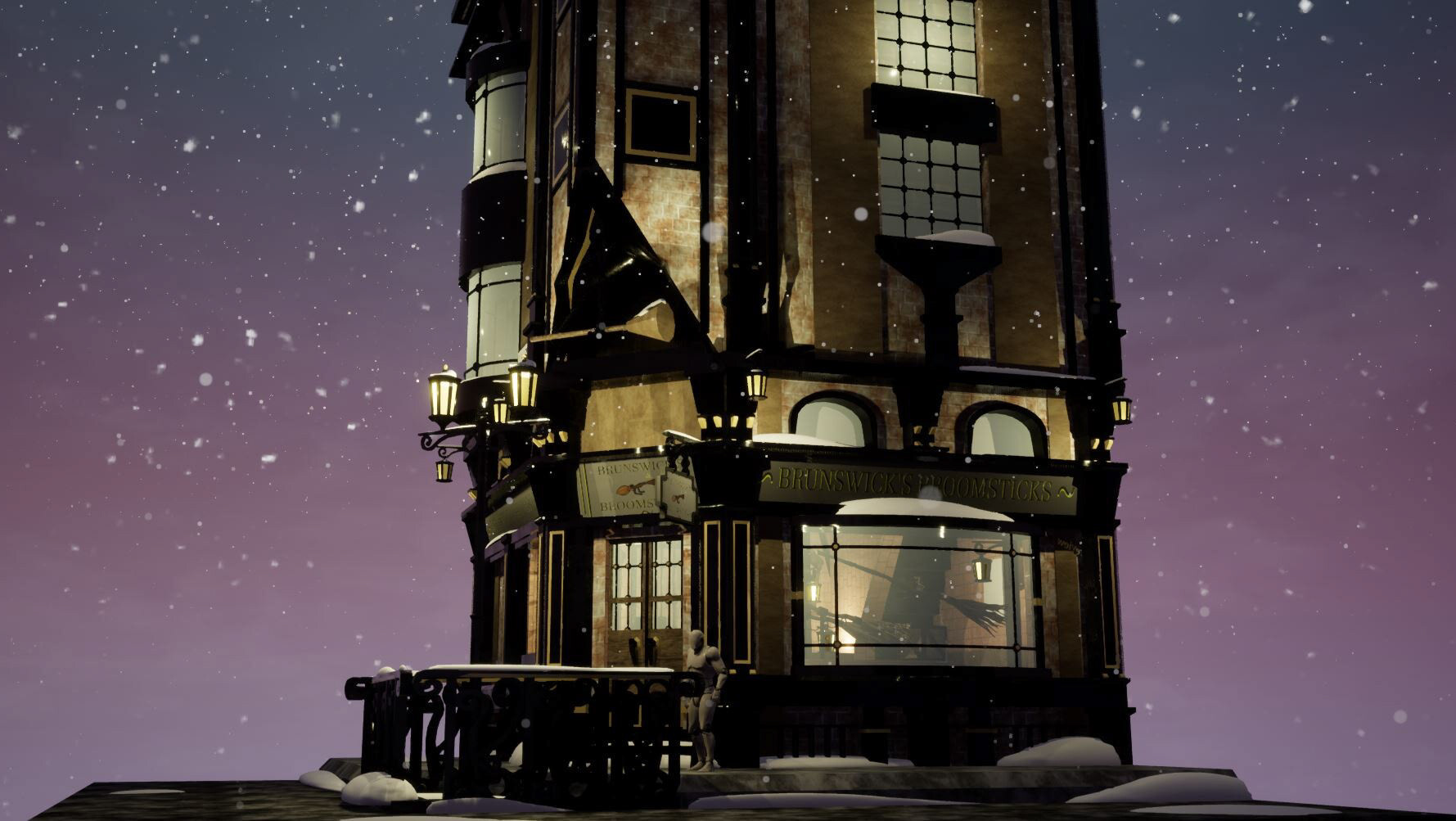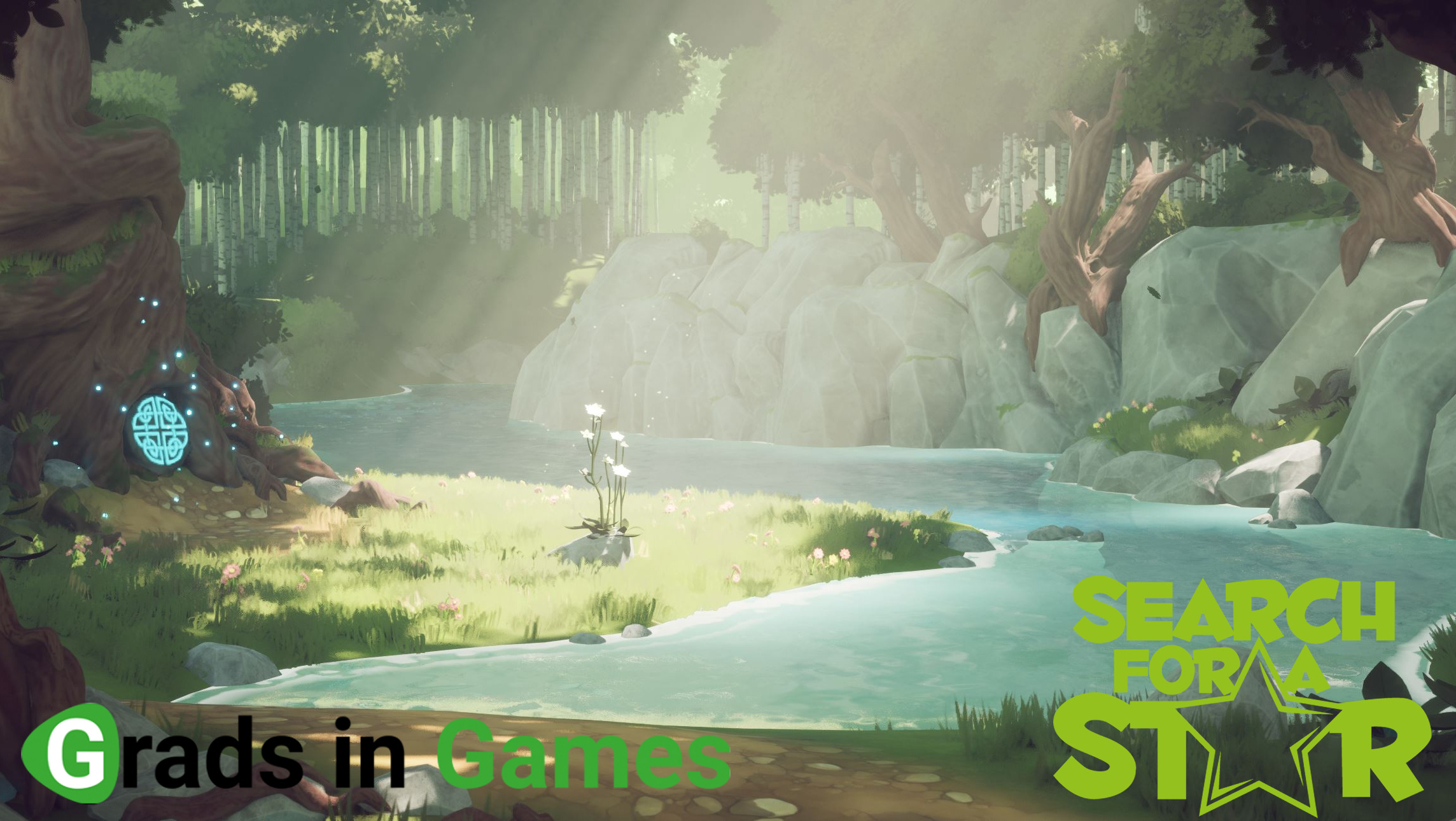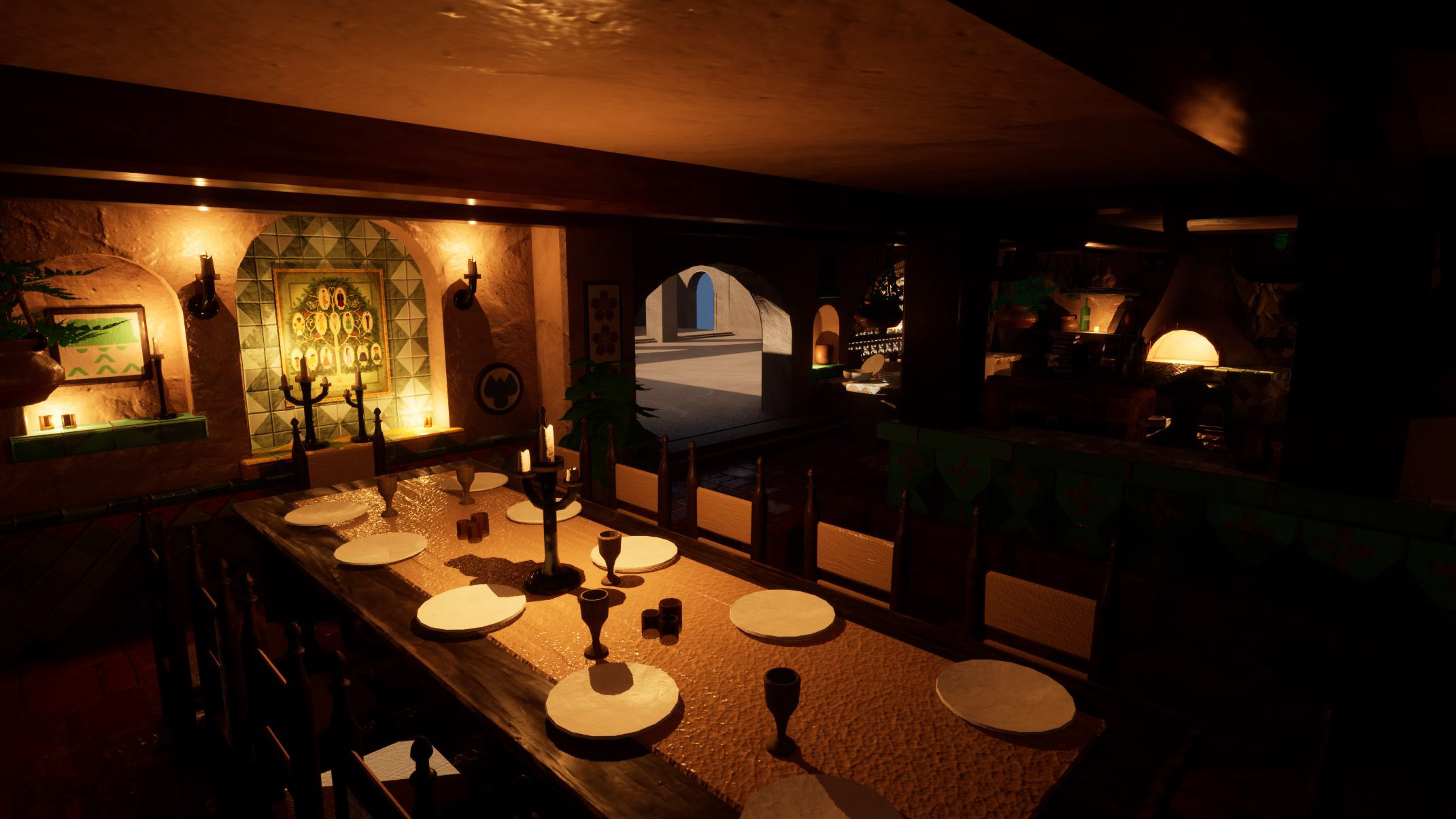- WINDCUTTER COTTAGE -
- Falmouth uni - Y2 - environment art - Final project -
Final submission for my environment module in final term, second year Games Art at Falmouth University. I wanted to give that classic cartoon/anime style environment a go and I am pretty pleased with the results. Learned a lot during this project, such as using Virtual Runtime Textures, as well as Parallax Occlusion Mapping, as can be seen on the Artstation page. Overall a worthwhile project, though a bit lacking in polish, that I will probably continue after deadline. This was modelled in Maya, textured in Substance Painter, and finalised in UE5. In this post I want to talk about the shortcomings of this project as well as the large amount that I learned during it.
- 2022 -
Inspirations for this project
This piece takes a lot of design elements from ‘A Forest House’ by Soyeon Kwon, just modified to be more like a windmill house. I really liked how interesting the roof is, especially as I had put some extra work into parallax occlusion mapping, and it gave it more of a chance to shine. On revision I would modify further, as currently the internals of the house make no sense with where the sail is placed.
Soyeon Kwon’s work: https://www.artstation.com/artwork/OGqd5w
These 4 pieces made up my style guide for this project, plus a few similar pieces. These helped a ton in deciding the smaller things, meaning I could focus on the big picture. I personally adore this style and want to work in it further.
Each image is hyperlinked with their corresponding Artstation link. I encourage you to check them out!
We’ll start with the final beauty render for the project. I wanted to highlight the animated aspects, plus the particle effects added. Some of the pieces I took inspiration from used these ‘wind wisps’ that leant themselves to the Breath of the Wild, cell shaded style I was after. I found a tutorial but felt that they were too wavey and didn’t have enough of a flow to them. I was able to edit the lifespan and point speed of the initial spawner to get the desired effect. I also added a falling leaf particle system that added quite a lot to the scenes sense of life. Looking back I’d probably change out the leaf style, as it’s a remnant of the old tree design and no longer reflects the trees present. The animation for the scene, if you can even call it that, is a very simple blueprint script that rotates the sails actor around its origin point, at a slow pace. I think all of this paired with how well the hero asset turned out makes for a scene that feels alive.
What I learnt during this project
VRTs
This is a technique that I’d never tried before called VRTs, or Virtual Runtime Textures. This is a way of gathering height and colour data from the Landscape beneath it, live. It means that an asset can directly reference these data values as it’s moved across the Landscape. What this means in practice is that it can create a smooth transition between asset and environment, by having the environment’s textures and colours ‘seep’ into the asset above. How I used this tech is by having the grass texture that the Landscape uses flow up into the Pine Tree asset and even show up as moss further up the trunk due to some clever mask editing. Not only does this create some variation with tree detailing, as per the environmental variance, but it also does it automatically due to them being runtime textures. The VRTs are also what makes the grass work, as they are almost entirely coloured by them. This is where VRTs really shine as I’m able to create colour variance in the grass incredibly quickly, by simply using the UE5 Landscape painter. This creates non-intrusive grass that looks fluffy. I’ve also thought beyond this, as if, for example, any player or enemy used a fire based attack that scars the ground with ash, would also automatically scar the trees, grass and any other assets using the VRT. There’s a lot of potential with this tech and I’m glad to have it in my arsenal.
If I had some extra time I think I would have developed the surrounding area some more. I had even laid out a pathway and plans of a second house. When I get some time I think I will come back and add to it. This style of project makes me want to create sprawling landscapes for a player to explore.
Parallax Occlusion Mapping
This was another technique that I’d never tried before, Parallax Occlusion Mapping. The technique makes use of the height map to generate layers of detail in order to create a false depth and fake 3d geometry that isn’t there. In that way we can make a flat wall appear as a highly detailed surface to save on polys. I loved using this technique as it means I didn’t have to do additional modelling, and the end result looks great thanks to a excellent tile texture if I do say so myself.
You can see the false depth created in the video above. This particular technique has a LOT of practical applications in other areas as being able to save on polys is a very valuable skill to a 3d artist. However it’s to be used sparingly, as it has a performance hit of its own. Knowing the risk/reward as well as the time and place to use it is the key for getting the most out of this effect.
A little bonus with the above video is that the VRTs are currently disabled, so you can see what the grass looks like when it doesn’t reference the Landscape below. As you can see it’s a massive difference.
What could have been done better
I stated before that I believe this project lacks polish, and I wanted to expand upon that. To begin with, the Parallax Occlusion Mapping that was used for the tiling of the roof meant that the edges of the asset needed to be framed, as not to break the illusion (as seen in the video above). For the top and sides this was no issue as that was planned already. However I really desired hanging tiles from the bottom edge, so I had to create a work-around with physically modelled tiles. I feel like these tiles were not given the care they needed, and as such stand out and do not blend seamlessly. On revision I would allot more time to them, as they are critical assets. Another critical area I believe could have used more care was foliage. While I spent a considerable amount of time on the pine trees, I feel there ground level foliage falls a bit flat and do not create a believable forest floor, that I’d done right, would have elevated the project considerably.
Overall this project was a lot of fun for me. I’ve always wanted to try this style and I was grateful for the open ended brief that I could tweak to my liking. It was a great chance to learn some new techniques and expand my repertoire. I will definitely work in this style again.




